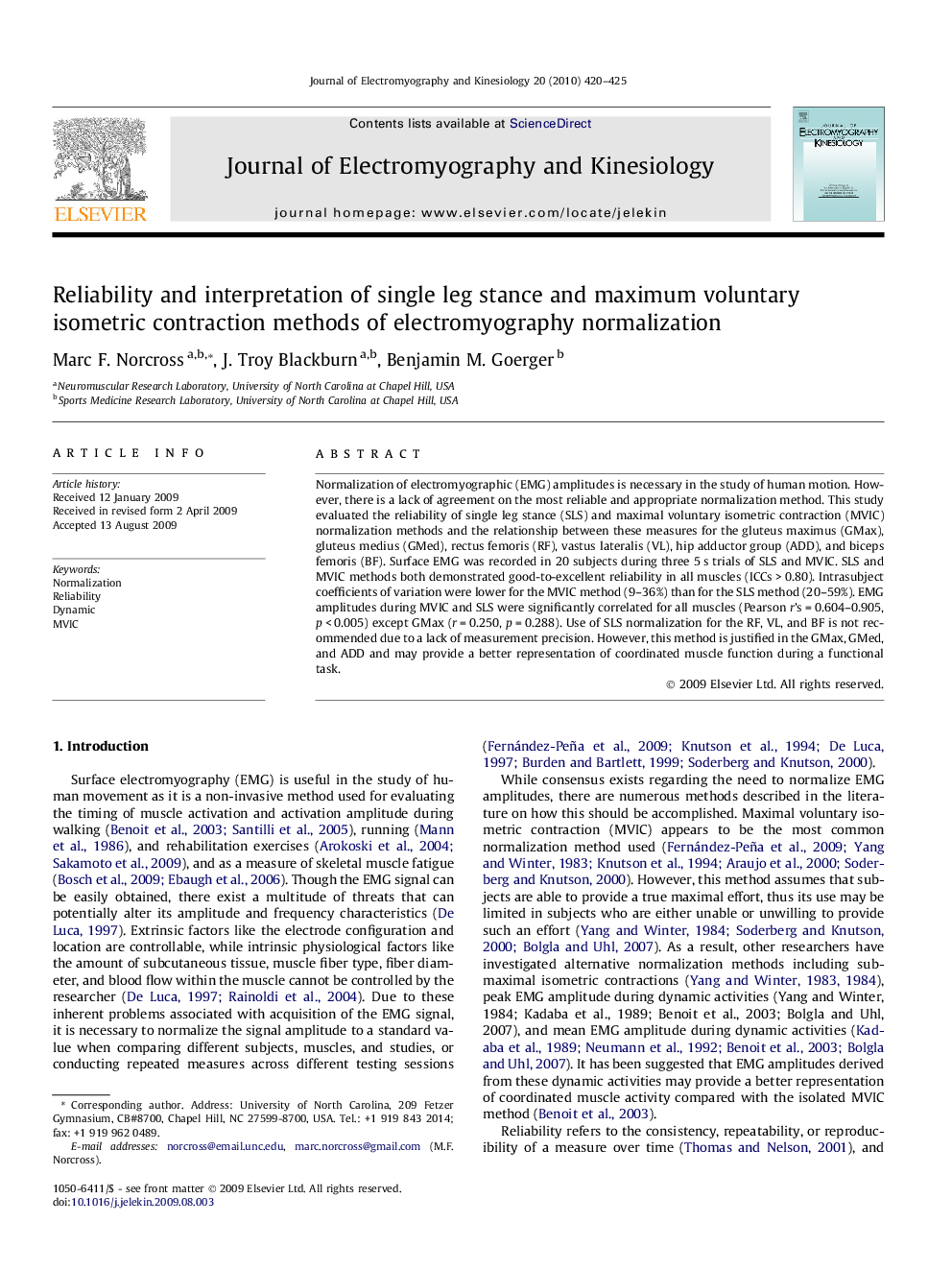| Article ID | Journal | Published Year | Pages | File Type |
|---|---|---|---|---|
| 4065188 | Journal of Electromyography and Kinesiology | 2010 | 6 Pages |
Normalization of electromyographic (EMG) amplitudes is necessary in the study of human motion. However, there is a lack of agreement on the most reliable and appropriate normalization method. This study evaluated the reliability of single leg stance (SLS) and maximal voluntary isometric contraction (MVIC) normalization methods and the relationship between these measures for the gluteus maximus (GMax), gluteus medius (GMed), rectus femoris (RF), vastus lateralis (VL), hip adductor group (ADD), and biceps femoris (BF). Surface EMG was recorded in 20 subjects during three 5 s trials of SLS and MVIC. SLS and MVIC methods both demonstrated good-to-excellent reliability in all muscles (ICCs > 0.80). Intrasubject coefficients of variation were lower for the MVIC method (9–36%) than for the SLS method (20–59%). EMG amplitudes during MVIC and SLS were significantly correlated for all muscles (Pearson r’s = 0.604–0.905, p < 0.005) except GMax (r = 0.250, p = 0.288). Use of SLS normalization for the RF, VL, and BF is not recommended due to a lack of measurement precision. However, this method is justified in the GMax, GMed, and ADD and may provide a better representation of coordinated muscle function during a functional task.
